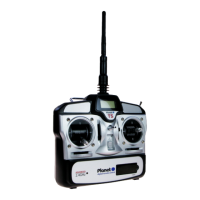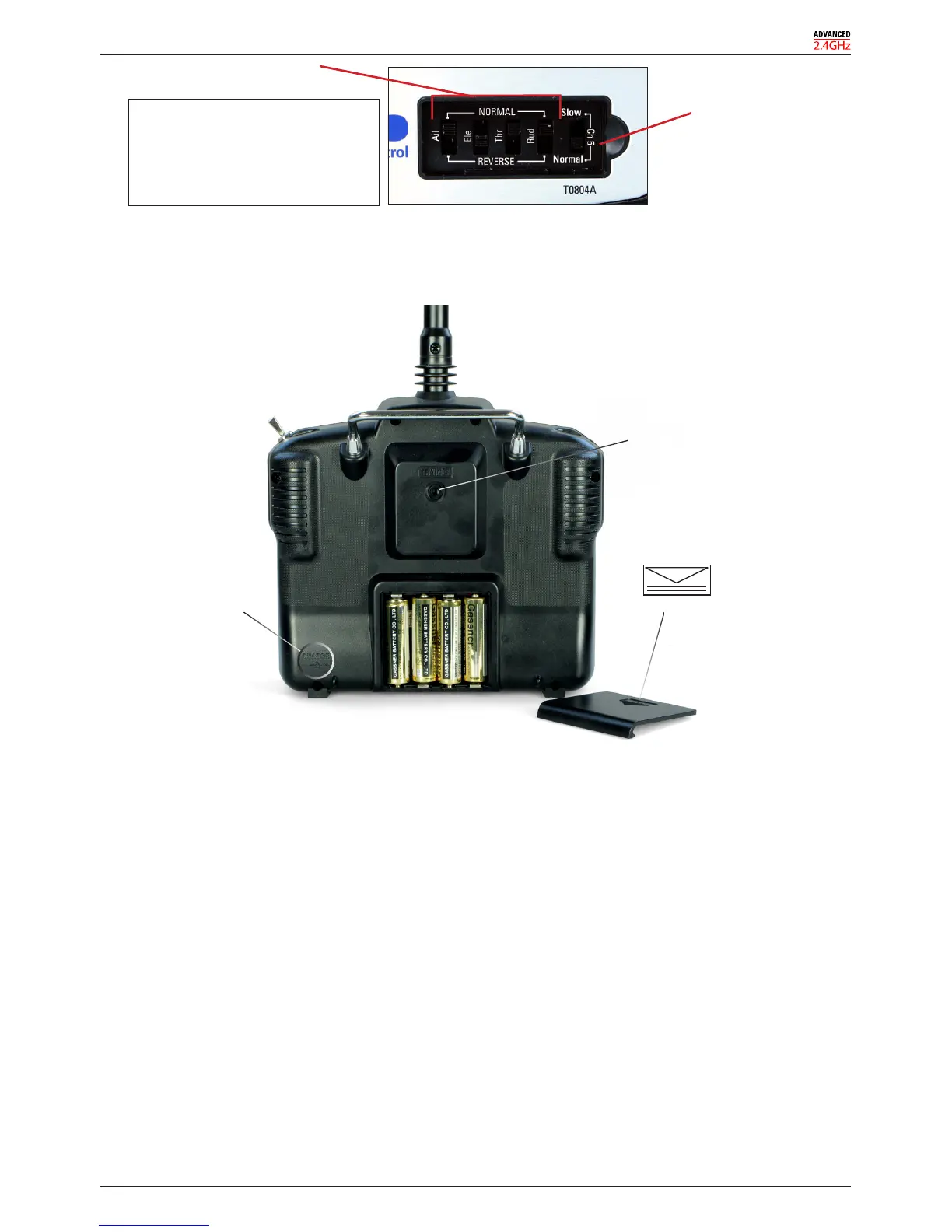Instruction Manual
3
Reversing switches
5th Channel
Normal/Slow rate
Switch
NOTE: Both the transmitter and
receiver must be switched off
before changing throttle reverse
function.
BATTERY FITTING
4 AA alkaline batteries are required. They are not supplied.
Install the 4 batteries into the battery compartment ensuring correct polarity is observed.
Simulator socket
Battery cover
Press and slide off cover
Charge socket
polarity
CHARGING SOCKET
Rechargeable AA batteries can be substituted for alkaline batteries.
N.B. Take note of the polarity diagram on the rear case and use a correctly rated 4.8V charger to charge the
rechargeable batteries.
SIMULATOR LEAD SOCKET
For optional Simulator lead connection.

